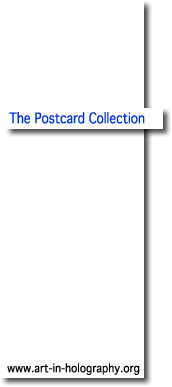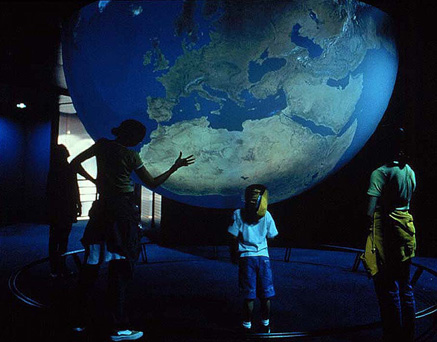

Holography used as a model offers a surprising array of tools to look at our environment with a new perspective. Amongst other interesting characteristics, the recording and the viewing of a hologram provides a unifying concept which breaks away from the Renaissance perspective model: the world does not converge towards the individual anymore. Holography shows that all viewing angles around the recorded scene are equally valid and illustrates the co-existence of multiple 'points of view'.
The element photographed here, even though it is not a hologram, is the expression of a logical step from the holographic paradigm. It offers the public a view of the earth as if it was seen from space, a global view on the world without political borders.
This piece, called the "Macroscope", is a permanent installation at the new "Cité de l'Espace" in Toulouse. It consists of an inflatable screen of 3.50 m in diameter, on which animated images of the earth, taken from space, are projected from inside. It was inspired by the making of the hologram of the first known terrestrial globe (1492) made by my partner D. Sevray and myself. Our workshop conceived and designed the Macroscope in collaboration with C.Hubert and L.Lucot / image engineering and C.Yvans / sound.
Pascal Gauchet spoke in Aesthetic Dimensions
Installation with inflated screen and projected images.
Photo © Cité de l'Espace
